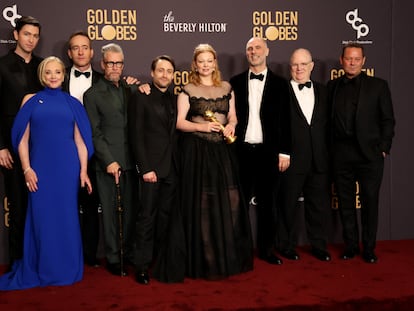What happened to the female sex symbols of the 1980s and 1990s?
Kim Basinger, now 70, was one of the most desired actresses during an era in Hollywood when the first sign of wrinkles could end a woman’s career
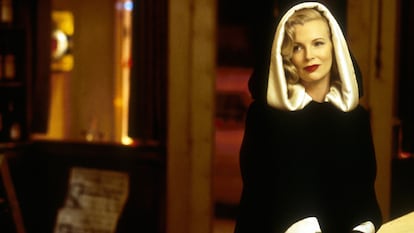
All of them reigned at the box office thanks, in part, to their physical attractiveness. Some managed to strengthen their careers beyond the roles of sex bombs and win the most prestigious awards. Others gave up fighting with a sexist and misogynistic industry that reduced them to mere pieces of meat. Hollywood condemned them to playing the role of grandmothers as soon as they turned 40, while allowing the Pacinos, Eastwoods and Nicholsons to continue acting as leading men past the age of 70.
There are many common elements between these iconic actresses. Almost all of them starred in erotic thrillers — the favorite genre of the 1980s — and almost all of them were, at some point, labeled as “difficult” for simply asking to maintain a certain level of control… not over the script, but over their own nakedness.
Kim Basinger (70)
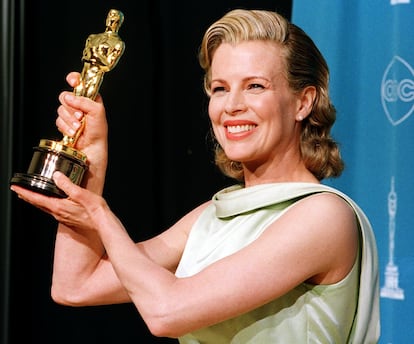
The scene that made her a sex symbol was an amateur striptease to the rhythm of You Can Leave Your Hat On, by Joe Cocker. In 9½ Weeks (1986), a modest gallery owner named Elizabeth discovered her sexuality… and viewers discovered Kim Basinger. However, the filming was so intense that it almost ended up burying her career, rather than launching it.
And what happened to her career? Before conquering the world with Adrian Lyne’s controversial film, she was a Bond girl in Never Say Never Again (1983), Sean Connery’s “unofficial” return to the 007 saga. Once she became a star, she continued cultivating her eroticism in the hot and sweaty Final Analysis alongside Richard Gere, while demonstrating her gift for comedy in Blind Date, opposite Bruce Willis.
Willing to prove that she was an all-rounder, Basinger took on the superhero genre in Batman and was an unlikely extraterrestrial in My Stepmother Is An Alien. Along with her then-husband, Alec Baldwin, she starred in a failed remake of The Getaway. And, before taking a break from films, she surprised audiences with her role as an overworked reporter in Robert Altman’s underrated Prêt-à-Porter.
Basinger returned and won an Oscar in 1997, thanks to her role as a prostitute in L.A. Confidential. People finally realized that her talent was as overwhelming as her attractiveness. Something that was corroborated by her roles as Eminem’s alcoholic mother in 8 Mile and as Jeff Bridges’ wife in The Door In The Floor, the adaptation of John Irving’s novel A Widow For One Year.
She didn’t have any notable successes again until she played Christian Grey’s partner and ex-lover in the sequels to Fifty Shades of Grey, a much more sanctimonious version of her first big success that — although no one knew it at the time — marked her farewell to the big screen. As she confessed in one of her few interviews, this goodbye was motivated by health problems. She suffers from agoraphobia, which has led her to experience frequent panic attacks. “I still get anxious sometimes, but I’ve worked very hard on it so it doesn’t paralyze me like it did before… I’ve found that it helps if I take the focus away from me — ironic for an actress, I know!”
What’s she up to now? Voluntarily away from Hollywood, Basinger remains focused on activism in favor of animals, as can be seen on her Instagram account, where she defines herself as an “actress that hopes all of humanity will one day treat animals with the respect they deserve.”
Sharon Stone (65)
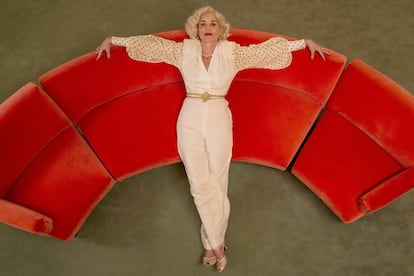
The scene that made her a sex symbol was the most famous leg crossing in history — and the most controversial. It took place in the film Basic Instinct (1992). Sharon Stone claims that Paul Verhoeven asked her to take off her underwear, promising that nothing would be seen. But when she saw the movie on the big screen, she discovered that was not the case. “I was in shock,” she confessed. “At the end of the film, I got up, went over to Paul and slapped him.”
What happened to her? The role of Catherine Tramell — a bisexual writer who moonlights as a cold and amoral serial killer — is one of those roles that only comes about once in an actress’s life. Meg Ryan, Julia Roberts and Michelle Pfeiffer rejected the part, each fearing that it would hurt their career. Stone accepted, yet has always regretted that the glory she so longed for had come to her when she was already in her thirties.
She began in the cinema with a small role in Woody Allen’s Stardust Memories and went through all the television series of the 1980s. In Total Recall, she demonstrated a charisma on par with Arnold Schwarzenegger, but it was Basic Instinct — the fourth highest-grossing film worldwide in 1992 — which made her a household name and earned her an Oscar nomination.
It wasn’t until Scorsese’s Casino (1995) that she was able to demonstrate her talents as a dramatic actress by achieving another Oscar nomination. After that came films more focused on her physique than on her acting skills, such as Gloria or The Muse. In 2001, she suffered a stroke, which slowed down her career. “I had to re-mortgage my house and all my savings were gone,” she declared.
What’s she doing now? Well, we’ve seen her play Lenore Osgood in the TV series Ratched, while she’s also been in The New Pope and The Flight Attendant.
Kathleen Turner (69)

The scene that made Kathleen Turner a sex symbol had the following dialogue:
“Maybe you shouldn’t dress like that.”
“This is a blouse and a skirt. I don’t know what you’re talking about.”
“You shouldn’t wear that body.”
Lawrence Kasdan wrote the script for Body Heat (1981), but Turner offered the neo-noir film a sexuality that transcended the screen. The sweaty and bewildered William Hurt fell before her like all the spectators.
So, what happened to Turner? She was one of the most acclaimed actresses of the 1980s. She demonstrated her talent for drama in Prizzi’s Honor alongside Jack Nicholson and her chemistry with Michael Douglas in Jewel Of The Nile (1985) was evident. Peggy Sue Got Married, by Francis Ford Coppola, earned her an Oscar nomination. She was even the voice of Jessica Rabbit — the animated sex symbol who wasn’t bad, but had just been drawn that way — in Who Framed Roger Rabbit. Her unstoppable trajectory was slowed by rheumatoid arthritis. To hide it, she let the press believe that she was an alcoholic. She didn’t care: she was aware that detox clinics are as common in stars’ biographies as visits to the hairdresser… but no insurer would guarantee the contract of an actress with a disabling illness.
“Producers know what addictions are and are used to managing them,” she confessed to Vulture in 2018. “But if I had said ‘I have a mysterious incurable illness and I don’t know if I’ll be able to walk tomorrow,’ no one was going to hire me.” Still, in a short time, she went from sex symbol to victim of the most embarrassing body-shaming. The phone stopped ringing. She found a place in the sprawling troupe of John Waters, with whom she filmed the hilarious Serial Mom (1994). But as the illness worsened, so did the addictions with which she tried to cope with the pain. Her appearances became more and more sporadic, but never without talent.
She was splendid as the fanatical matriarch of the Lisbon family in The Virgin Suicides and hilarious as the transgender father of Mathew Perry in Friends… a role she doesn’t regret, but one she wouldn’t do again. “There was no question of casting a trans person or a drag queen — it was never considered. It never crossed my mind that I was taking a role from someone. But I certainly don’t regret having taken it. It was a challenge!” she told The Guardian.
What’s she doing now? Television. To the delight of nostalgic folks, she has returned to share the screen with Michael Douglas in the second season of The Kominsky Method, three decades after their apocalyptic divorce in The War of the Roses (1989). The chemistry between the two is still intact.
Debra Winger (68)

The scene that made her a sex symbol was her ride on a mechanical bull in Urban Cowboy (1980). She managed to eclipse a John Travolta who had just triumphed in Saturday Night Fever and Grease. When Debra Winger is on screen, you don’t notice anyone else.
What happened to her career? The acidic and rarely-accommodating film critic Pauline Kael commended that she was “one of the main reasons for going to see movies in the 1980s.” However, 40 years later, her name is synonymous with slamming the door on Hollywood — a goodbye amplified by Rosana Arquette’s documentary Searching for Debra Winger (2002), in which several actresses commented on the problem of finding good female roles after the age of 35.
It was Sissy Spacek abandoning the role that allowed Winger to star in Urban Cowboy, even though the all-powerful producer Robert Evans considered her unattractive for the part. It wasn’t the last time she had to hear something like that. Don Simpson crudely considered her “not f**kable enough” to star in An Officer And A Gentleman (1982). The Academy disagreed, nominating her for an Oscar.
Her second nomination came for the tearjerker Terms of Endearment (1983), the third for the delightful Shadowlands (1993), the love story between poet Joey Gresham and C.S. Lewis, author of The Chronicles of Narnia. She also starred in offbeat thrillers like Black Widow (1987) or Costa Gavras’ Betrayed (1988). She stepped into the shoes of Jane Bowles in Bernardo Bertolucci’s The Sheltering Sky (1990). But at the age of 40, she decided to leave Hollywood and has only returned sporadically.
What’s she doing now? We’ve seen her play Ashton Kutcher’s mother in the Netflix series The Ranch and Joseph Gordon-Levitt’s mother in Apple TV’s Mr. Corman. Quite a change for someone who once had the most hypnotic presence on the big screen.
Linda Fiorentino (63)
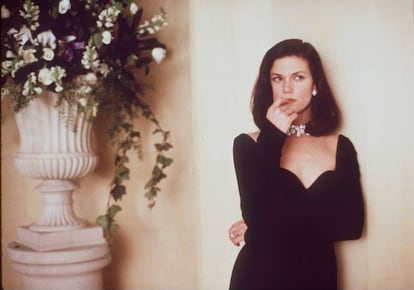
The scene that made her a sex symbol: a brunette walks into a joint swaggering. Five minutes later, she’s putting her hand on the fly of a boastful cowboy. Hollywood had just found the heiress of Lauren Bacall, Gene Tierney and Barbara Stanwyck.
What happened to Linda Fiorentino’s career? The Last Seduction (1994), an independent erotic thriller, captivated critics and won Fiorentino the Independent Spirit Award for Best Female Lead and the New York Film Critics Circle Award for Best Actress. She didn’t aspire to an Academy Award, because the film had premiered directly on the HBO network, which — at that time — meant that she was ineligible. But this didn’t prevent Vanity Fair from including her on its iconic cover of female stars of the year.
Previously, she had had a small but unforgettable role as a dominatrix sculptor in Martin Scorsese’s After Hours and formed part of the beautiful cast of The Moderns, by Alan Rudolph. They weren’t great roles, but they were enough to create expectations that The Last Seduction fulfilled. It was more difficult to maintain this fame, however. Hollywood offered her another erotic thriller: an imitation of Basic Instinct, with the same screenwriter, the over-the-top Joe Eszterhas. Produced by the legendary Robert Evans and directed by William Friedkin — the man responsible for The Exorcist — it seemed that nothing could go wrong. But everything did.
In Men in Black, she moved away from the roles that had made her popular. While her role in the second part of the saga was taken for granted, she disappeared without further explanation, although rumors spoke of a “difficult” character. In the language of Hollywood, this means having your own opinions and not being a mere instrument to reaffirm male power on or off-screen.
What’s she doing now? Nothing related to cinema. Hers was one of the most emphatic goodbyes in the industry.
Susan Sarandon (New York, age 77)
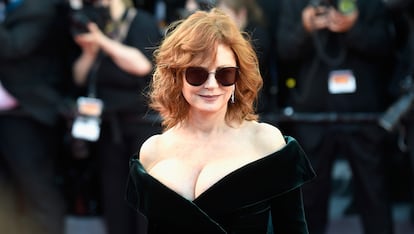
The scene that made her a sex symbol was when she washed her naked body with lemons in Atlantic City (1980), with the decadent gangster, played by Burt Lancaster, eagerly watching. Intimate grooming had never been so sensual. As in the best erotic scenes, the most seductive thing is what Louis Malle doesn’t show, but the viewer intuits.
From the beginning, Sarandon demonstrated that she was never going to take the easy path. She worked under Billy Wilder in the masterful The Front Page (1974) and was part of the iconic The Rocky Horror Picture Show (1975). Under the orders of her partner, Louis Malle, she served as Brooke Shields’ pimp mother in Pretty Baby (1978) and fell in love with a vampire in The Hunger (1983).
In the mid-1980s — starring alongside Michelle Pfeiffer and Cher — she formed the stellar trio that fought the diabolical Jack Nicholson in The Witches Of Eastwick and was a kind of groupie philosopher who slept with a baseball player each season in Bull Durham… one of those films in which you’re certain that the script hasn’t been read by any woman with the power to touch a single comma. In it, she shared filming duties with her husband, Tim Robbins.
The couple soon became the conscience of Hollywood. Their denunciation of the treatment experienced by Haitians suffering with HIV in a Guantánamo Bay prison earned them a veto from the Academy. With Thelma & Louise, she earned an Oscar nomination and the greatest popularity of her career. But it was the life of a real nun, Sister Helen Prejean, that earned her the statuette for Dead Man Walking (1995).
What’s she doing now? Probably looking for a new agency. Her support for the Palestinian cause has led to the company that has represented her for 14 years to dissociate itself from her. But if Sarandon’s human rights activism hasn’t waned, neither has her schedule: she currently has four projects underway.
Michelle Pfeiffer (65)
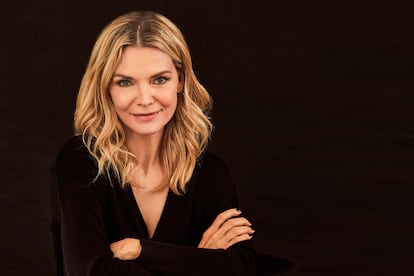
In Scarface (1983), a blonde — whose face we don’t see — descends in a glass elevator, wearing an emerald slip dress. Al Pacino’s look of desire and fascination as she approaches him was the same look that millions of viewers gave her in theaters.
What happened to Michelle Pfeiffer’s career? She’s a well-rounded actress: she’s done drama, comedy and musicals. She was evil in Disney’s productions and a superhero in the Marvel and DC worlds. Her films have grossed more than $7 billion at the box office and she has eight nominations for the Golden Globes (six of them consecutive) and three for the Oscars. She was stunning in the medieval fantasy Ladyhawke, whose script she was forced to edit to prevent herself from just being a damsel in distress. She got her first Oscar nomination as a teacher in Dangerous Minds (1994), where she made it clear that she was much more than just a pretty face. When she took to the piano in The Fabulous Baker Boys, the world held its breath.
The 1990s are simply filled with her unforgettable performances, from the waitress in Frankie and Johnny, to the tough teacher in Dangerous Minds. With nothing more to prove, she slowed down. “I didn’t set out to stop working, it wasn’t my plan. But I became so difficult in terms of my prerequisites.”
What’s she doing now? With French Exit, she got her most recent Golden Globe nomination in 2021. Recently, she’s been in a television series about Betty Ford and played Janet Van Dyne in Ant-Man and the Wasp. Let’s hope she still has a few returns left — the worst Marvel movie ever doesn’t deserve to be her farewell.
Jessica Lange (74)
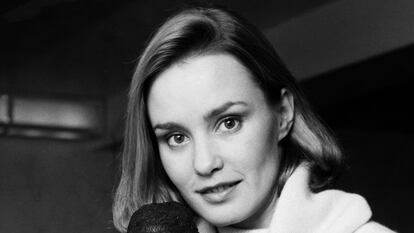
Jessica Lange’s sex scene on a kitchen table in The Postman Always Rings Twice (1981) exuded so much realism that Bob Rafelson was forced to deny that the sex had been real. Lange and Jack Nicholson gave a new meaning to sharing household chores and showed that extremely intense eroticism can be transmitted without showing too much skin.
What happened to her career? She made her film debut in a big way. She was the object of King Kong’s desire in Dino De Laurentis’ version, a remake that would be forgettable if it weren’t for her presence. But it was The Postman Always Rings Twice that put her on the map. The following year, Frances — the tragic biography of the actress Frances Farmer — established her as a dramatic actress. In 1983, she was nominated as best actress and as best supporting actress. She won the latter for Tootsie, although she didn’t think much of it. “The Oscars have become utter nonsense, [they have] nothing to do with movies.” Whether she cared about awards or not, she racked them up for her roles in Sweet Dreams (1985) and Music Box (1989), but it was her performance as Tommy Lee Jones’ manic-depressive wife in Blue Sky (1994) that gave Lange her second Oscar.
What’s she doing now? Although she’s recently threatened to retire, she has several projects in the works, such as a film about Marlene Dietrich’s years in Las Vegas, produced by Ryan Murphy. The director has built up her fame among a new generation of viewers, thanks to the TV series American Horror Story and Feud.
Kelly McGillis (66)

A discreet dance in a barn to the rhythm of Wonderful World in the film Witness (1985) demonstrated the unthinkable… that the Amish could be sexy.
What happened to her career? Thanks to the success of Witness, Kelly McGillis received an offer that was difficult to refuse: the flight instructor who seduces Tom Cruise in Top Gun (1986). Tony Scott’s film instantly established McGillis as a sex symbol. This was despite the fact that the hottest scenes were added in later, when, during screen tests, viewers indicated that they wanted something more than endless sequences of flights and volleyball games.
She was subsequently offered the role in The Accused (1988) that would end up being played by Jodie Foster. While Lange didn’t reveal it at the time, she rejected the part since she herself had been a victim of rape. She preferred to play the protagonist’s lawyer: it became her first relevant role in which she wasn’t cast as a mere accessory to the male protagonist.
Unfortunately, her stardom had an early expiration date. Like so many women on the list, she was labeled as “difficult.” She has refused to fight aging through artificial means and, in 2009, she came out as a lesbian.
Lange hasn’t had a big role in years. Given industry prejudices, there was no place for her in the latest Top Gun movie.
Melanie Griffith (66)

Melanie Griffith became a sex symbol in Brian de Palma’s Body Double (1984). She played the role of Holly Body, strutting sensually behind a window, wearing fishnet stockings. The film paid a direct homage to Rear Window (1954) and Vertigo (1958).
How did her career go? Before being directed by De Palma — Hitchcock’s biggest admirer — Griffith had participated with her mother in Roar (1981), the most dangerous production in the history of cinema, in which many of the actors were harmed by animal attacks. Still, that wasn’t the worst thing that she faced in life.
She played a crazy and dangerous blonde in Something Wild (1986), but it was her role in Working Girl (1988) that shot her to fame. If the character, Tess McGil, had a mind for business and a body for sin, Griffith had a preternatural talent for comedy. She got a Golden Globe and an Oscar nomination. She then chained herself to failed projects, such as The Bonfire of the Vanities and Shining Through with Michael Douglas. Her marriages to Don Johnson and Antonio Banderas began to attract more attention than her films.
What’s she doing now? Taking it easy. Griffith’s well-known drug and alcohol addictions temporarily stalled her career at different points. In August of 2018, she confessed that she had recovered from skin cancer. She’s very active on social media, where she likes to post about her famous family.
Sign up for our weekly newsletter to get more English-language news coverage from EL PAÍS USA Edition
Tu suscripción se está usando en otro dispositivo
¿Quieres añadir otro usuario a tu suscripción?
Si continúas leyendo en este dispositivo, no se podrá leer en el otro.
FlechaTu suscripción se está usando en otro dispositivo y solo puedes acceder a EL PAÍS desde un dispositivo a la vez.
Si quieres compartir tu cuenta, cambia tu suscripción a la modalidad Premium, así podrás añadir otro usuario. Cada uno accederá con su propia cuenta de email, lo que os permitirá personalizar vuestra experiencia en EL PAÍS.
¿Tienes una suscripción de empresa? Accede aquí para contratar más cuentas.
En el caso de no saber quién está usando tu cuenta, te recomendamos cambiar tu contraseña aquí.
Si decides continuar compartiendo tu cuenta, este mensaje se mostrará en tu dispositivo y en el de la otra persona que está usando tu cuenta de forma indefinida, afectando a tu experiencia de lectura. Puedes consultar aquí los términos y condiciones de la suscripción digital.
More information
Archived In
Últimas noticias
Maduro pleads not guilty before the federal court in New York: ‘I am still the president of Venezuela’
A new test can detect Alzheimer’s from a finger prick
UN team enters Sudanese city of El Fasher after paramilitary massacre: ‘It’s like a ghost town’
A recipe for resistance: Indigenous peoples politicize their struggles from the kitchen
Most viewed
- Gilles Lipovetsky: ‘If you want to live better and fall in love, take Prozac, don’t look to philosophy’
- Alain Aspect, Nobel laureate in physics: ‘Einstein was so smart that he would have had to recognize quantum entanglement’
- Alvin Hellerstein, a 92-year-old judge appointed by Bill Clinton, to preside over Maduro’s trial in New York
- Why oil has been at the center of Venezuela-US conflicts for decades
- Maduro’s downfall puts China’s relationship with Venezuela to the test

